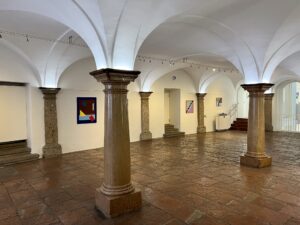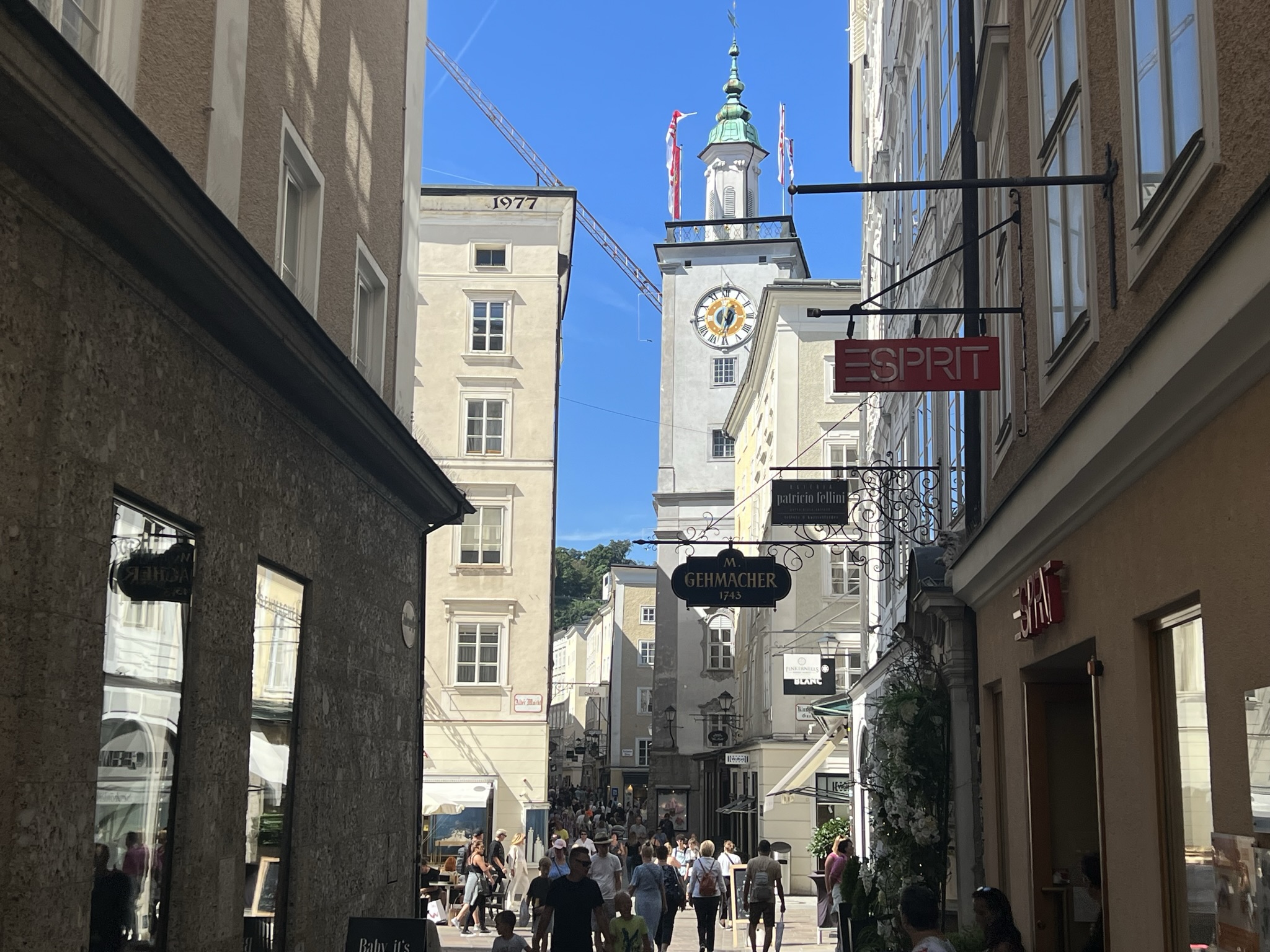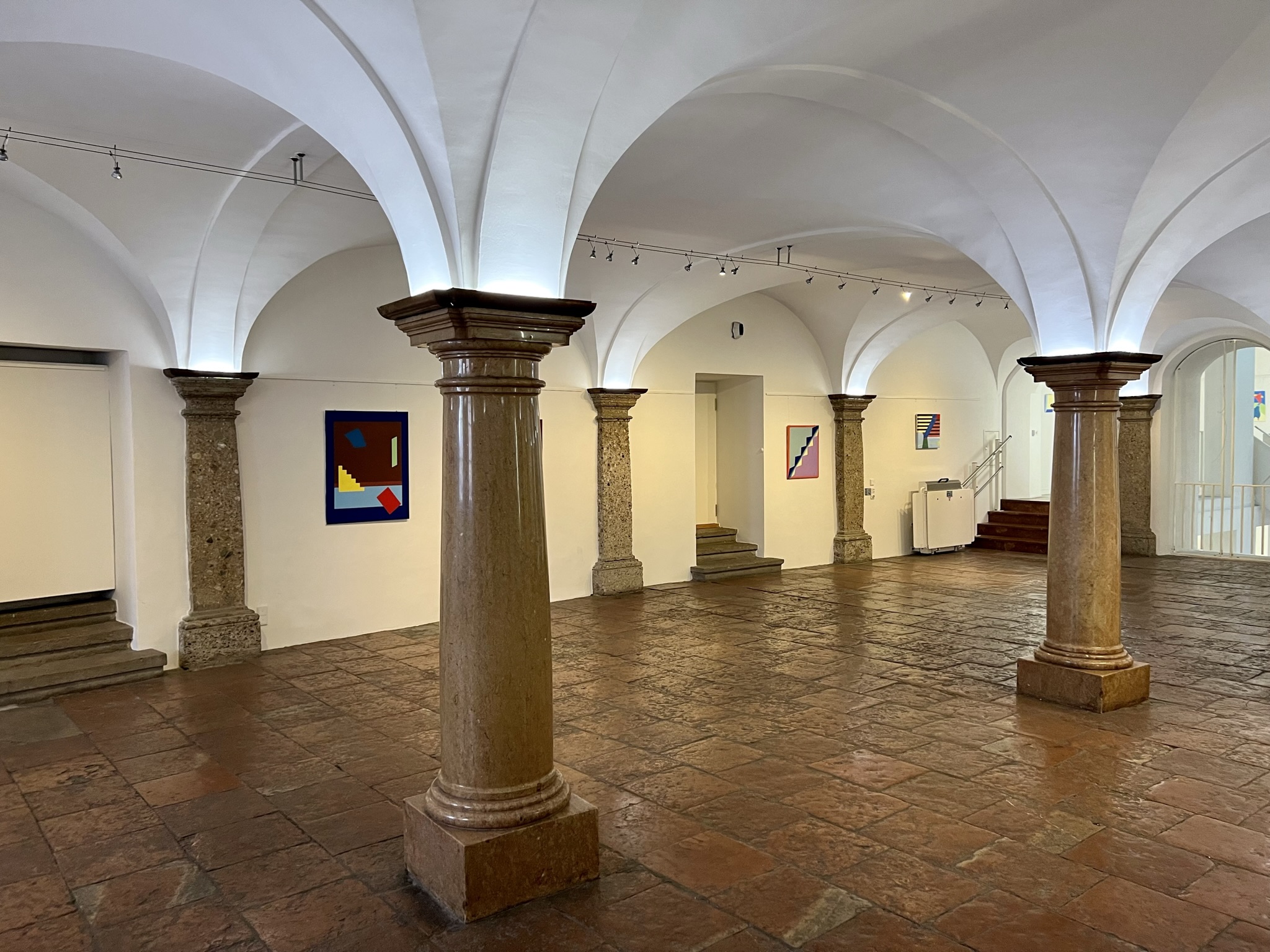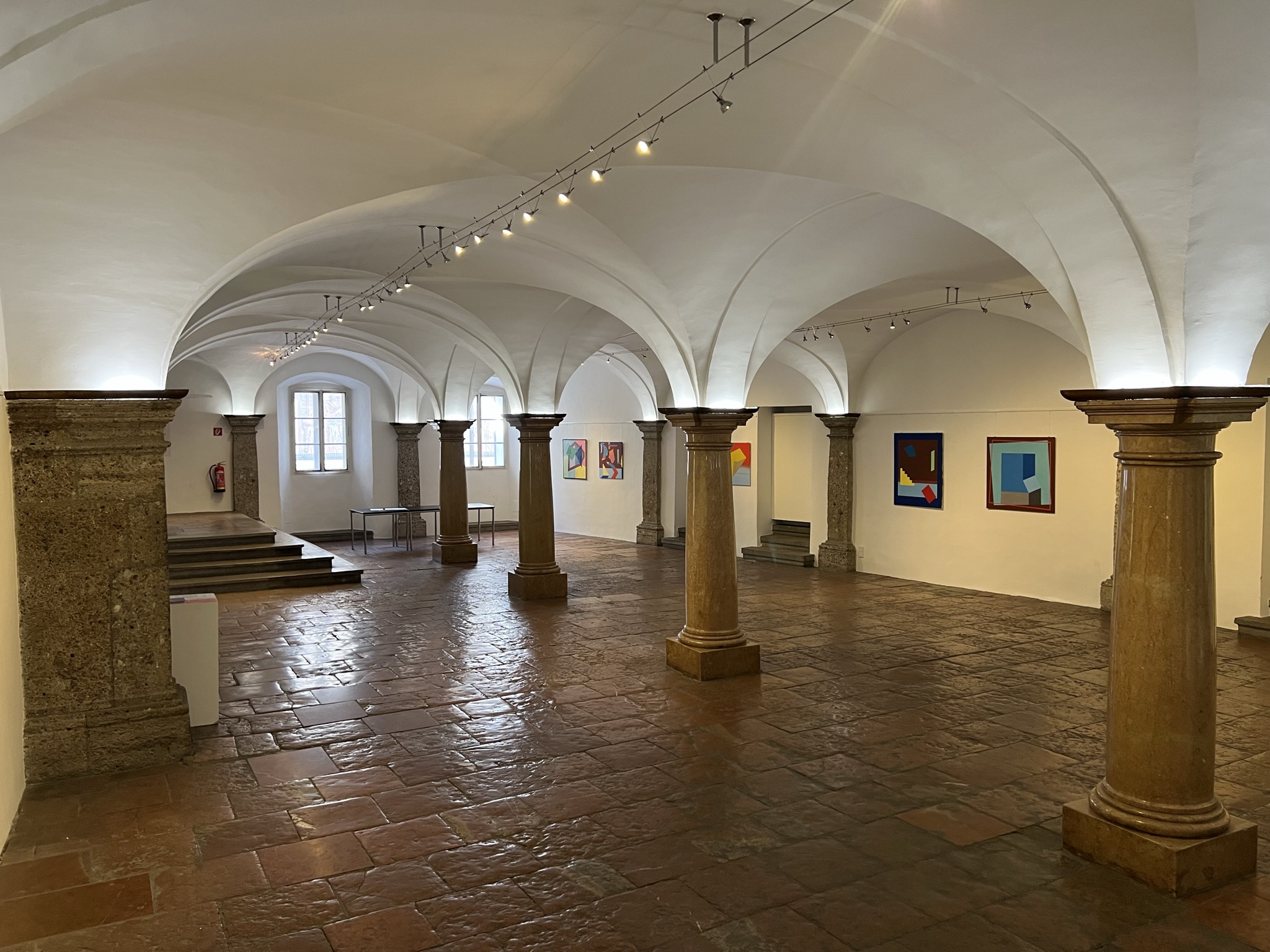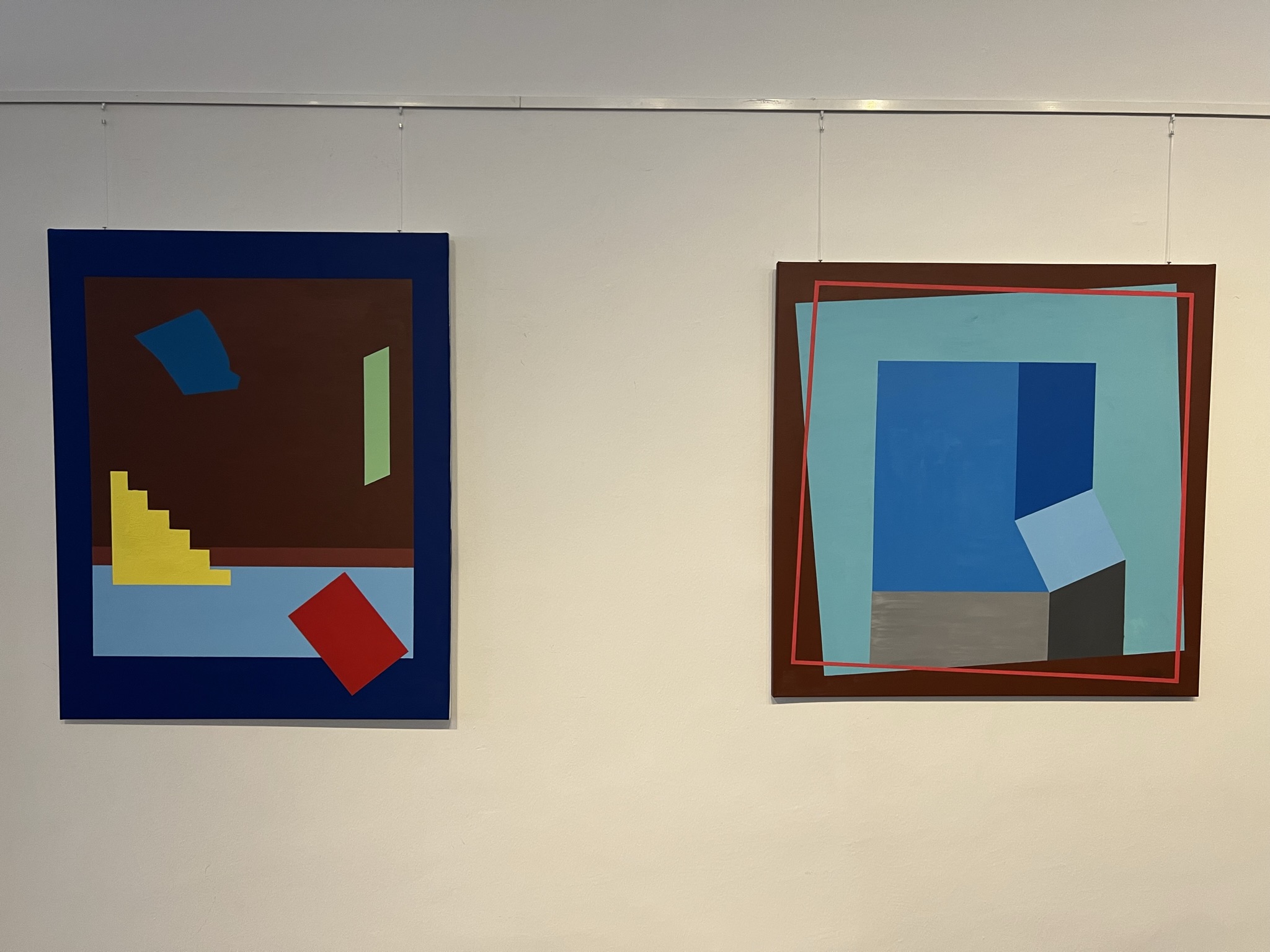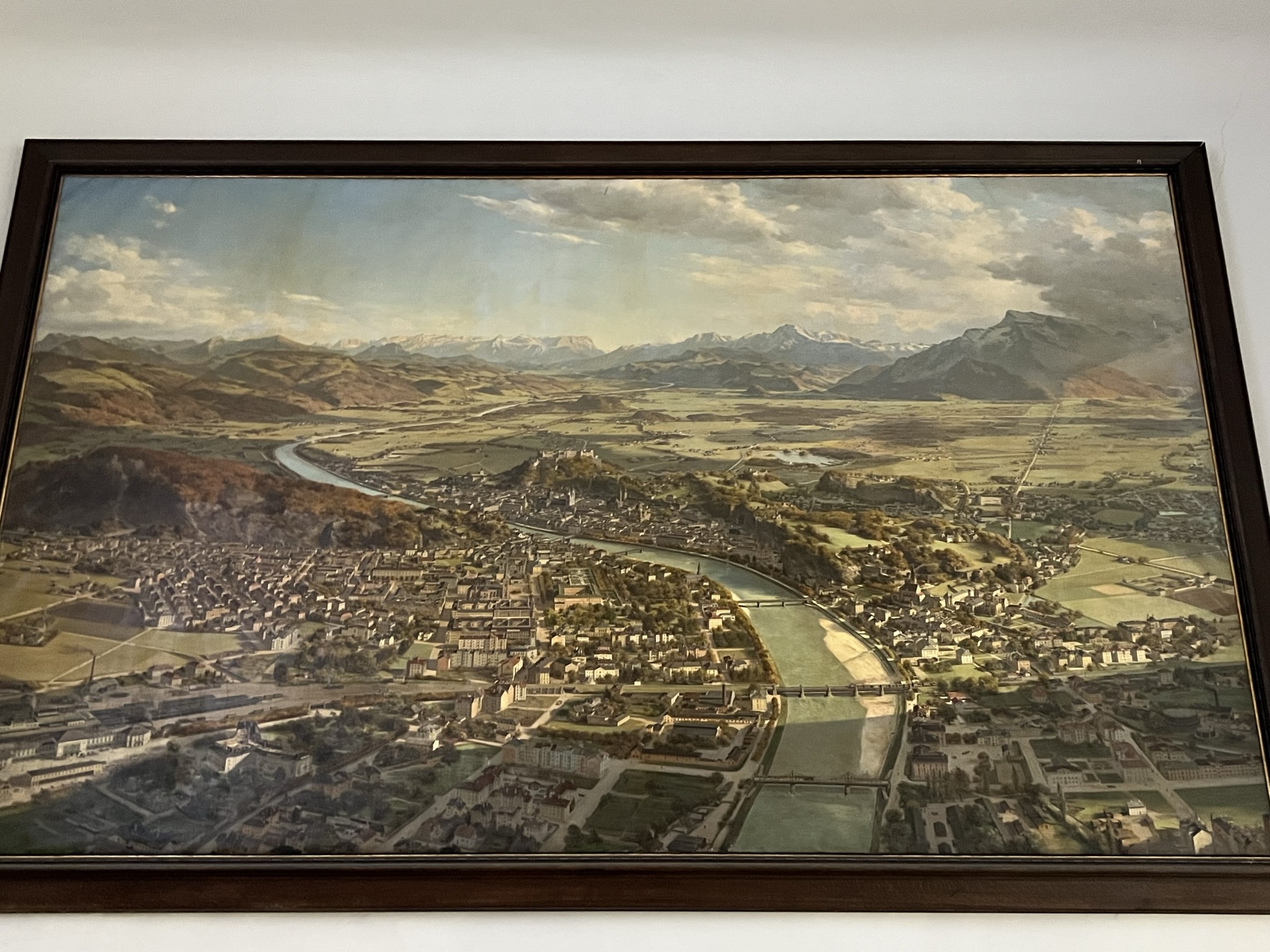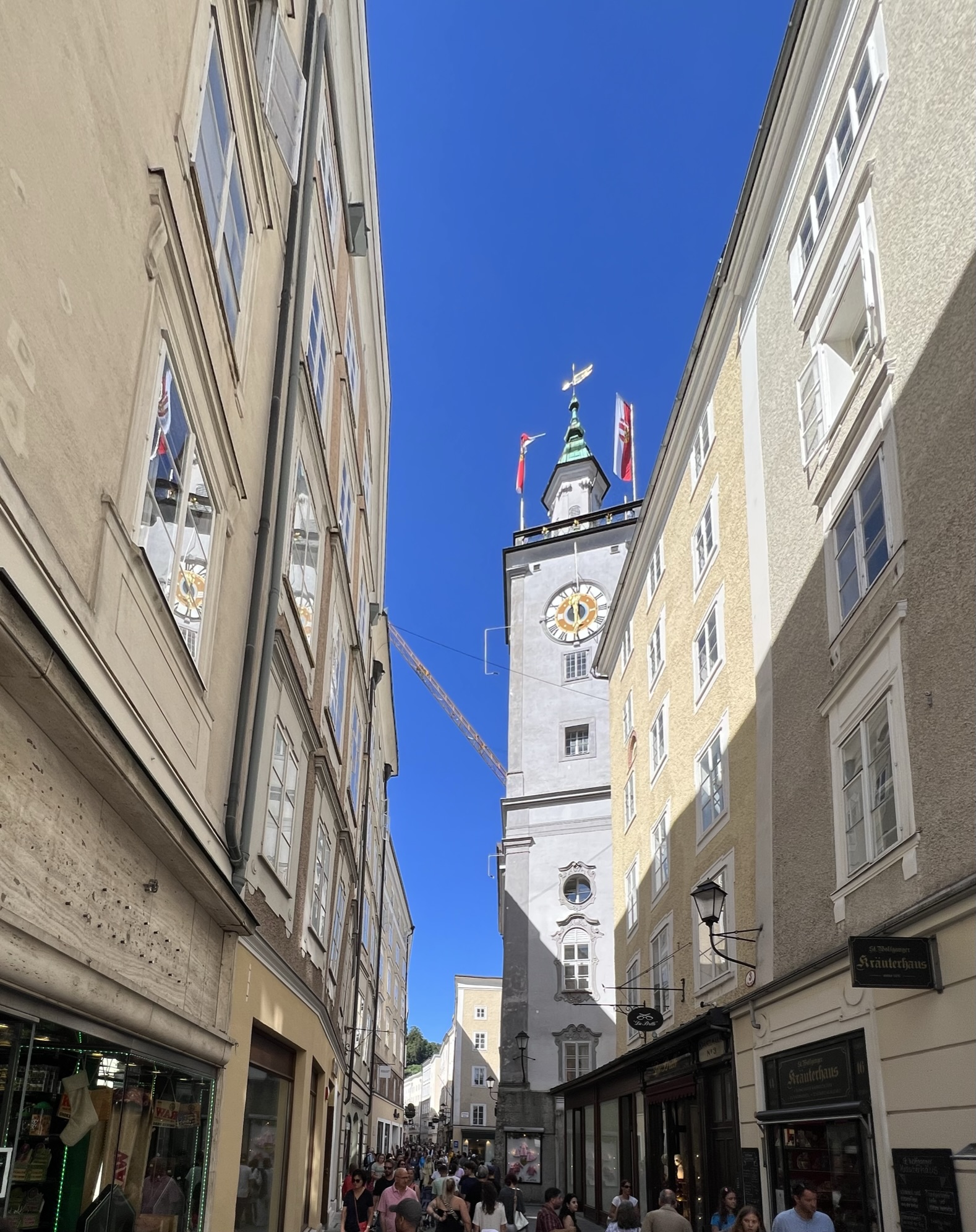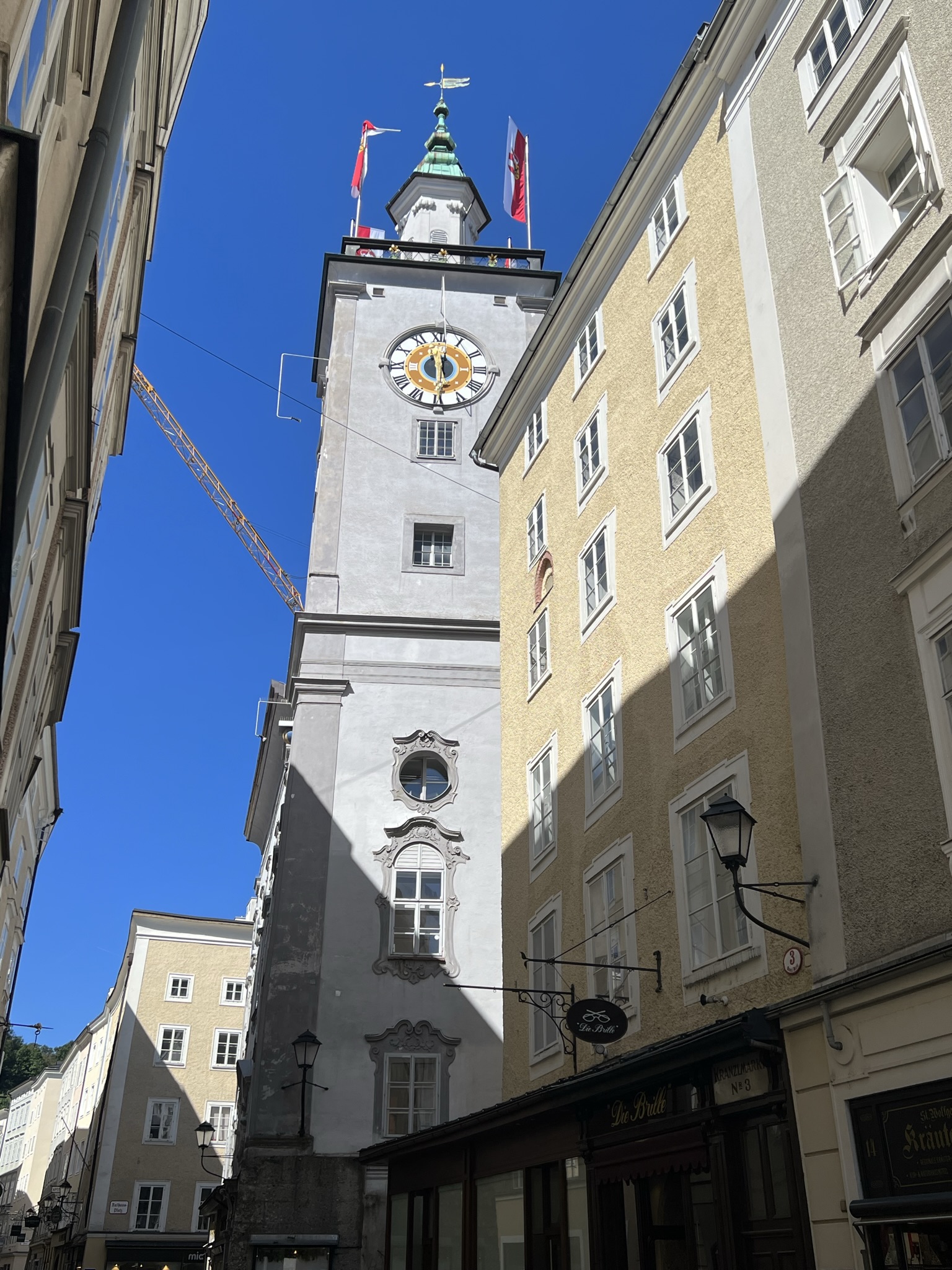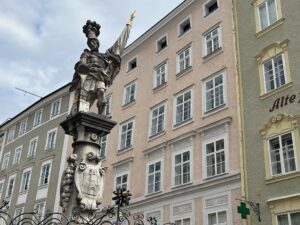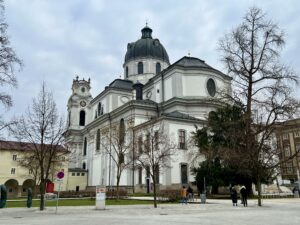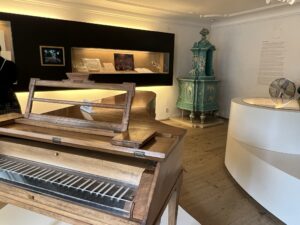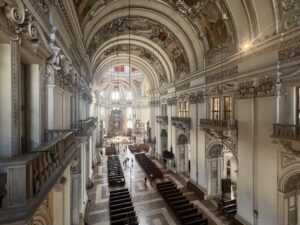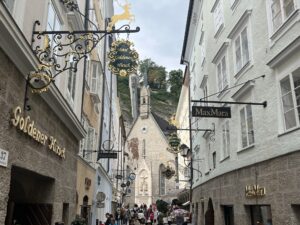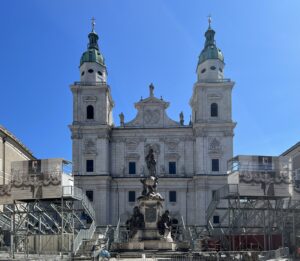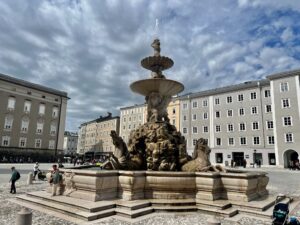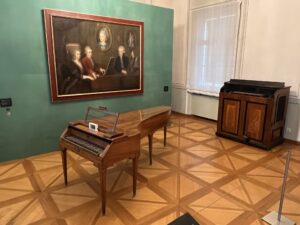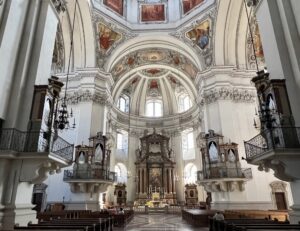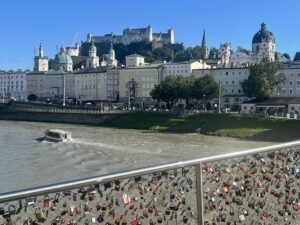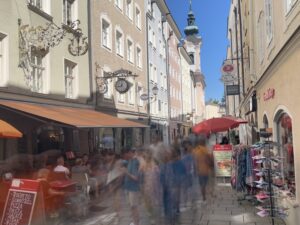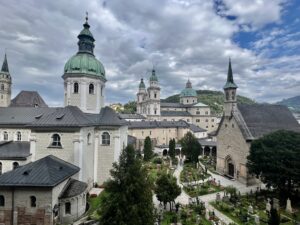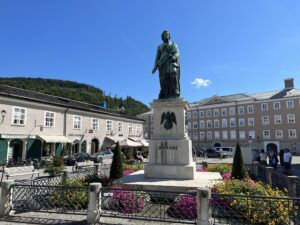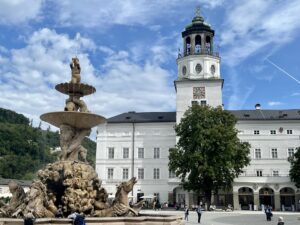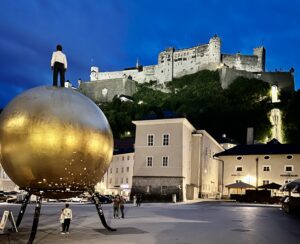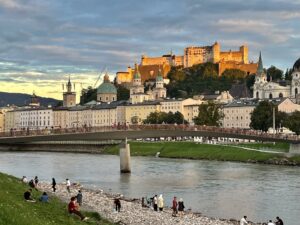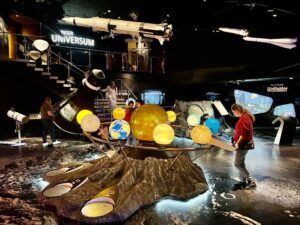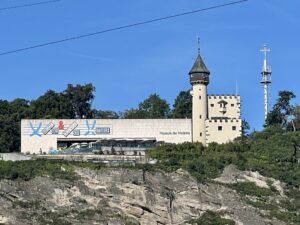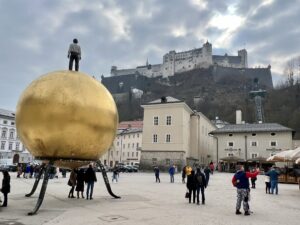Quick Facts:
- What is the Altes Rathaus? The town hall, a historic building in Salzburg.
- Where is it located? Kranzlmarkt 1, 5020 Salzburg, directly adjacent to Getreidegasse with Mozart’s Birthplace. A few meters in the other direction, you’ll find the Old Market.
- How much is the admission? Admission is free.
- When is it open? The Altes Rathaus is usually accessible during business hours.
- How much time should you plan? About 30 minutes.
Overview
The Altes Rathaus (town hall) in Salzburg is a historic building dating back to 1772, representing a significant part of the city’s history. After the mayor relocated to Schloss Mirabell in 1947, the Altes Rathaus is now used for various purposes, including a gallery, meeting rooms for the city council, and housing the oldest clock mechanism and bell in the city. The figure of Justice (1616) on the exterior facade serves as a reminder of the former function of the town hall as a courthouse.
History of the Town Hall
The Altes Rathaus was constructed in the 14th century and stands as an impressive example of medieval architecture. Around 1370, Salzburg had a city council, followed by the appointment of a mayor. The “Kheuzlturm” served multiple functions, including ringing the curfew with its bells, functioning as public clocks through its clock tower and tower musicians, and even announcing the night watchman’s calls from the city tower. Additionally, the tower served as an alarm center during fires or disturbances.
Over time, the role of the mayor and the function of the town hall diminished, particularly during the terms of the Archbishop-Princes Matthäus Lang and Wolf Dietrich von Raitenau. Throughout the centuries, the building’s purpose underwent significant changes. It even hosted dance events until the construction of the State Theatre. Furthermore, the town clerk, midwife, and city preacher had their residential quarters within the premises.
Cultural Significance
Today, the Altes Rathaus is utilized for various cultural events, including exhibitions and concerts. On the first floor, you’ll find the Säulenhalle of the Stadtgalerie featuring rotating exhibitions of Salzburg artists, which, to be honest, we didn’t find particularly exciting. The upper floors mainly house offices.
Publicly accessible on the second floor is the Kulstrunk Panorama “The City of Salzburg in the Year 1916,” which hangs prominently.
